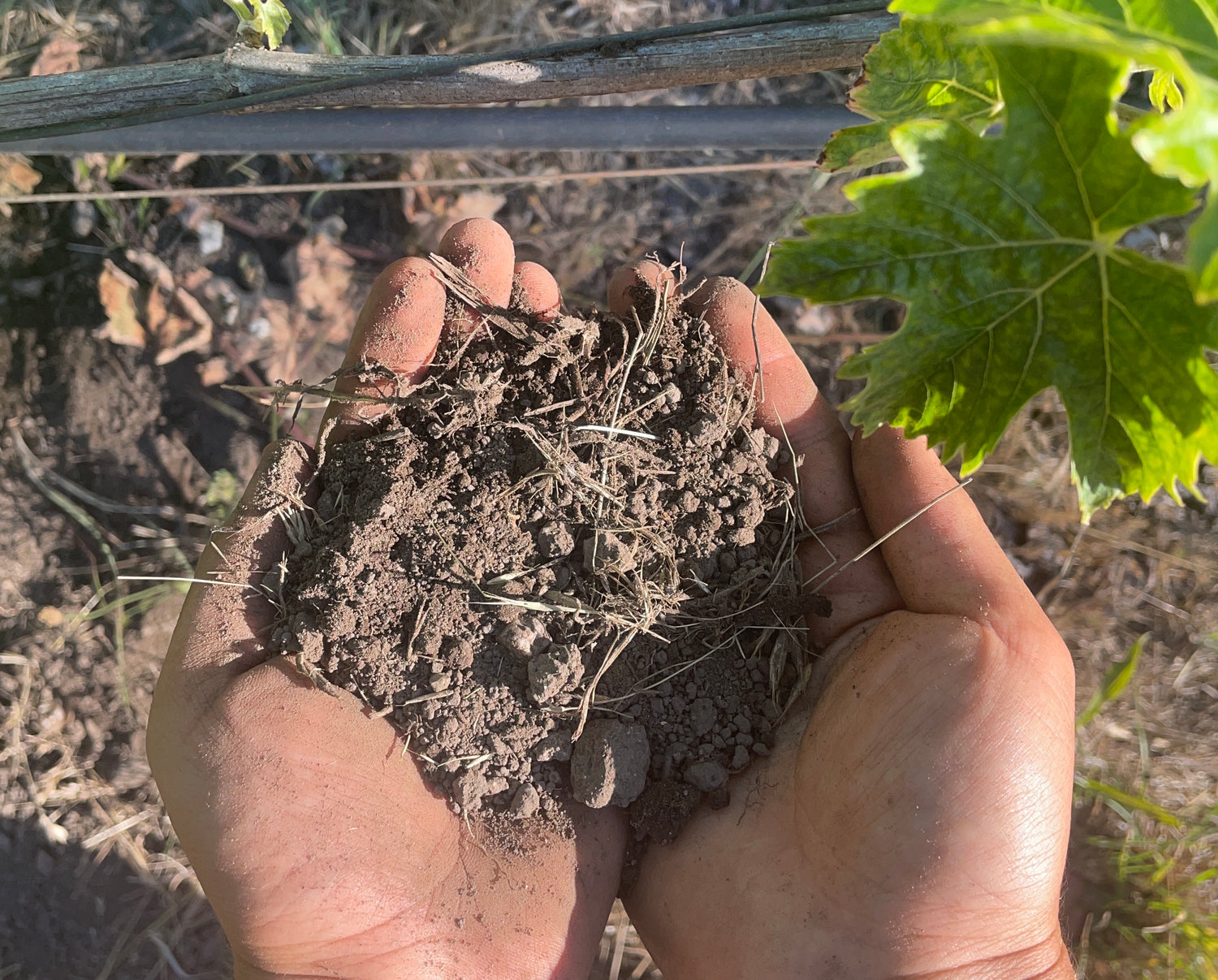California's diverse landscape and extensive industrial history create unique soil conditions that require careful evaluation before property purchase. From former mining sites to agricultural areas with pesticide residues, the Golden State presents environmental challenges that can significantly impact property value, development potential, and human health.
Soil testing is essential for California property buyers to identify contamination from heavy metals, petroleum products, and industrial chemicals, ensure regulatory compliance, assess structural stability, and protect both health and investment value in a state with significant environmental liabilities.
California Soil Testing Guide: Essential Steps for Property Buyers
The California Context: Why Soil Testing Matters
California's unique combination of geological diversity, seismic activity, and extensive industrial development creates soil conditions that require thorough evaluation before property purchase. The state's history includes mining operations, petroleum extraction, agricultural chemical use, and industrial manufacturing that have left environmental legacies throughout many regions.
According to the California Environmental Protection Agency, thousands of sites across the state require environmental cleanup due to soil and groundwater contamination. This reality makes soil testing a critical component of due diligence for any property transaction, whether residential, commercial, or industrial.
The state's regulatory framework requires disclosure of known environmental hazards, but many contamination issues remain undiscovered until proper testing occurs. Professional soil assessment protects buyers from unexpected remediation costs and ensures safe property use.
Understanding Soil Contamination Risks
California's soil contamination issues stem from various historical and ongoing activities that have introduced harmful substances into the environment. Understanding these risks helps property buyers make informed decisions about testing needs and potential liabilities.
Industrial Legacy Contamination
Many areas throughout California contain former industrial sites where manufacturing, chemical processing, or waste disposal activities occurred. These sites may contain heavy metals, petroleum products, solvents, and other industrial chemicals that persist in soil for decades.
The Department of Toxic Substances Control maintains databases of known contaminated sites, but many historical activities occurred before modern environmental regulations and may not appear in official records. This makes independent soil testing particularly important for urban and industrial areas.
Even residential properties may be affected if they were built on former industrial land or if nearby activities contaminated surrounding areas through air deposition or groundwater migration.
Agricultural Chemical Residues
California's extensive agricultural history means many areas contain residues from decades of pesticide, herbicide, and fertilizer use. Some persistent chemicals remain active in soil long after application ceased, potentially affecting human health and limiting future land use options.
Properties adjacent to current or former agricultural areas may also be affected by chemical drift or runoff. The California Department of Pesticide Regulation maintains records of pesticide use, but historical applications may not be fully documented.
Organic farming operations or residential food production may be particularly sensitive to pesticide residues, making testing essential for properties intended for these uses.
Mining and Extraction Activities
California's mining history includes gold, silver, copper, and other mineral extraction that often used mercury, cyanide, and other toxic substances. Many former mining areas contain elevated levels of heavy metals and processing chemicals that pose ongoing environmental and health risks.
Oil and gas extraction activities have also left contamination in many areas, including petroleum products, drilling fluids, and production chemicals. These substances can affect both soil and groundwater quality over large areas.
Even properties not directly involved in mining or extraction may be affected if they received fill material from contaminated sites or if groundwater carried contaminants from nearby operations.
Health and Safety Considerations
Soil contamination poses direct risks to human health through multiple exposure pathways that property buyers must understand and evaluate. These risks vary depending on the specific contaminants present and how the property will be used.
Direct Contact Exposure
Children playing in contaminated soil face the highest risks from direct contact exposure, particularly from lead and other heavy metals that can cause developmental problems. Gardening activities also create direct contact opportunities for adults.
According to the EPA, lead-contaminated soil remains one of the most common health hazards in urban areas, particularly around older buildings where lead-based paint was used. Even small amounts of lead exposure can cause serious health effects in children.
Other heavy metals like arsenic, mercury, and cadmium also pose significant health risks through direct contact, making testing essential for any property where people will spend time outdoors.
Inhalation Risks
Contaminated soil can release harmful vapors that people inhale, particularly volatile organic compounds from petroleum products or industrial solvents. These vapors can accumulate in buildings through soil gas intrusion, creating indoor air quality problems.
Dust from contaminated soil also poses inhalation risks, especially during construction or landscaping activities that disturb the ground. Fine particles containing heavy metals or other toxins can be inhaled and cause respiratory problems.
Properties with contamination may require specialized ventilation systems or soil caps to prevent vapor intrusion, adding significant costs to development or occupancy.
Food Chain Contamination
Plants grown in contaminated soil can absorb and concentrate harmful substances, creating food safety risks for anyone consuming homegrown produce. Some contaminants accumulate in specific plant parts, while others affect the entire plant.
Lead, cadmium, and other heavy metals readily transfer from soil to vegetables, particularly leafy greens and root crops. Even decorative plants can pose risks if children or pets consume them.
Livestock grazing on contaminated areas can also concentrate toxins in meat and dairy products, extending contamination risks through the food chain.
Regulatory Compliance and Legal Requirements
California maintains extensive environmental regulations that property owners must understand and comply with, making soil testing essential for avoiding legal liabilities and ensuring proper land use.
State Environmental Regulations
The California Environmental Protection Agency oversees numerous programs addressing soil contamination, including the Site Cleanup Program and Underground Storage Tank Cleanup Program. These regulations establish cleanup standards and require remediation of contaminated sites.
Property owners can become liable for contamination they did not cause if they purchase contaminated land without proper investigation. The state's environmental laws hold current owners responsible for cleanup costs regardless of when contamination occurred.
Compliance with environmental regulations often requires ongoing monitoring and maintenance, creating long-term obligations that affect property value and use options.
Local Ordinances and Requirements
Many California cities and counties have additional environmental requirements beyond state regulations, particularly in areas with known contamination issues. These local rules may require soil testing before development or changes in land use.
Some jurisdictions maintain databases of potentially contaminated sites and require environmental assessments for properties in designated areas. Zoning changes or building permits may trigger soil testing requirements.
Local health departments may also have specific requirements for soil quality, particularly for properties intended for residential use or food production.
Financial and Investment Protection
Soil testing protects property investments by identifying potential liabilities and cleanup costs before purchase, enabling informed decision-making and proper financial planning.
Remediation Cost Considerations
Soil remediation can be extremely expensive, with costs varying widely depending on the type and extent of contamination. Simple soil removal and replacement may cost tens of thousands of dollars, while complex groundwater treatment systems can cost millions.
Advanced remediation technologies like soil vapor extraction, chemical oxidation, or bioremediation require specialized contractors and ongoing monitoring. These costs can significantly exceed the original property purchase price.
Insurance rarely covers contamination that existed before policy purchase, making soil testing essential for avoiding unexpected financial liabilities.
Property Value Impacts
Known soil contamination typically reduces property values and limits future sale options. Even after successful remediation, properties may carry stigma that affects marketability and pricing.
Lenders often require environmental assessments for contaminated properties and may impose restrictions on financing. Development projects may face delays and additional costs for environmental compliance.
Properties with contamination history may require ongoing monitoring and maintenance that creates perpetual obligations affecting long-term value and use options.
Professional Testing and Assessment
Proper soil testing requires qualified professionals and appropriate laboratory analysis to ensure accurate results and regulatory compliance.
Environmental Site Assessments
Phase I Environmental Site Assessments provide initial evaluation of contamination potential through records review, site inspection, and interviews. These assessments identify areas of concern that may require soil testing.
Phase II Environmental Site Assessments involve actual soil and groundwater sampling to confirm or rule out contamination identified in Phase I work. These assessments provide definitive information about environmental conditions.
The American Society for Testing and Materials publishes standard practices for environmental site assessments that most professionals follow to ensure consistent and defensible results.
Laboratory Analysis and Interpretation
Soil samples must be analyzed by laboratories certified for environmental testing using EPA-approved methods. Different contaminants require different analytical techniques and detection limits.
Results must be interpreted in context of regulatory standards, intended land use, and site-specific conditions. Professional environmental consultants provide this interpretation and recommend appropriate actions based on findings.
Quality assurance procedures including duplicate samples, blanks, and chain-of-custody documentation ensure reliable results that will withstand regulatory scrutiny.
Remediation Options and Strategies
When soil testing identifies contamination, various remediation options are available depending on the specific circumstances and regulatory requirements.
Excavation and Disposal
Removing contaminated soil and disposing of it at approved facilities provides definitive cleanup but can be expensive and disruptive. This approach works best for small, shallow contamination areas.
Disposal costs vary significantly depending on contamination type and concentration. Hazardous waste disposal can cost hundreds of dollars per ton, making excavation expensive for large contaminated areas.
Excavation may also require temporary relocation of utilities, landscaping restoration, and structural considerations if contamination extends under buildings.
In-Place Treatment Technologies
Various technologies can treat contamination without excavation, including chemical injection, bioremediation, and thermal treatment. These approaches often cost less than excavation but require longer timeframes.
Treatment effectiveness varies by contaminant type and site conditions. Some technologies work well for petroleum products but not heavy metals, while others address specific chemical classes.
In-place treatment typically requires ongoing monitoring to verify effectiveness and may need multiple treatment cycles to achieve cleanup goals.
Making Informed Purchase Decisions
Soil testing results should inform property purchase decisions through careful evaluation of risks, costs, and mitigation options.
Risk Assessment and Management
Not all soil contamination requires immediate action. Risk assessment considers contamination levels, exposure pathways, and intended property use to determine appropriate response measures.
Some contamination may be managed through engineering controls like soil caps or institutional controls like deed restrictions. These approaches may be more cost-effective than active remediation.
Professional risk assessment helps buyers understand actual hazards versus theoretical concerns and develop appropriate management strategies.
Negotiation and Contract Considerations
Soil testing results provide leverage for price negotiations and contract terms. Buyers may seek price reductions, seller-funded remediation, or liability protections based on contamination findings.
Purchase contracts should address environmental issues clearly, including who bears responsibility for contamination discovered after closing. Environmental insurance may provide additional protection.
Professional legal and environmental advice helps structure transactions to protect buyers while allowing deals to proceed when contamination is manageable.
Conclusion
Soil testing represents essential due diligence for California property buyers, protecting both health and financial interests in a state with significant environmental challenges. Understanding contamination risks, regulatory requirements, and remediation options enables informed decision-making and appropriate risk management. Professional environmental assessment provides the expertise needed to navigate these complex issues and ensure successful property transactions that protect all stakeholders.
Sources
- California Environmental Protection Agency. Contaminated Site Information. https://calepa.ca.gov/
- Department of Toxic Substances Control. Site Cleanup Program. https://dtsc.ca.gov/cleanup-programs/
- California Regional Water Quality Control Boards. Groundwater and Soil Contamination. https://www.waterboards.ca.gov/
- U.S. Environmental Protection Agency. Environmental Site Assessment. https://www.epa.gov/brownfields/environmental-site-assessments
- California Department of Pesticide Regulation. Pesticide Use Reports. https://www.cdpr.ca.gov/
- American Society for Testing and Materials. Environmental Site Assessment Standards. https://www.astm.org/
- California Geological Survey. Geologic Hazards and Environmental Geology. https://www.conservation.ca.gov/cgs
- California Association of Environmental Professionals. Best Practices Guide. https://www.caep.org/












